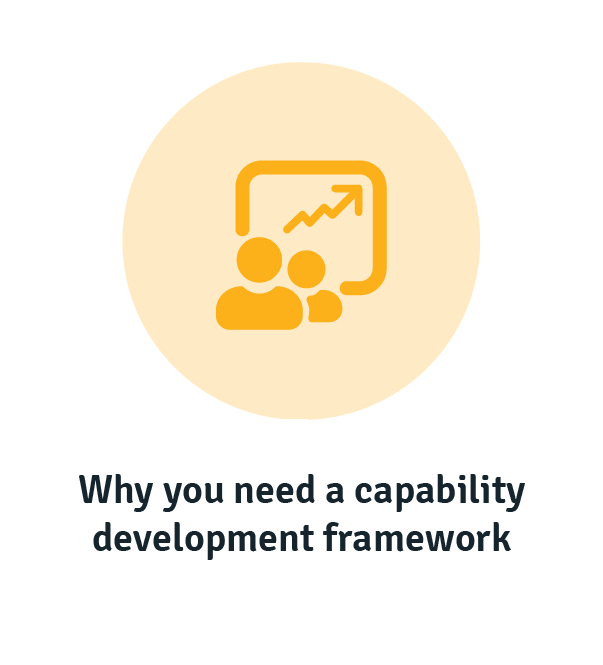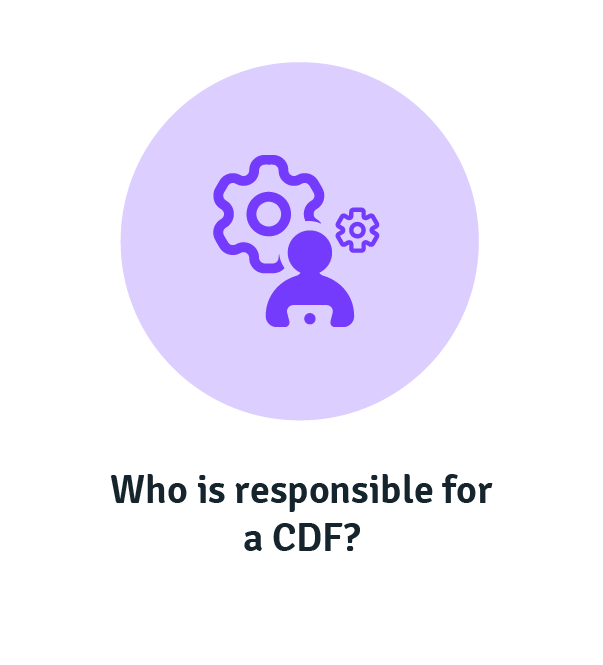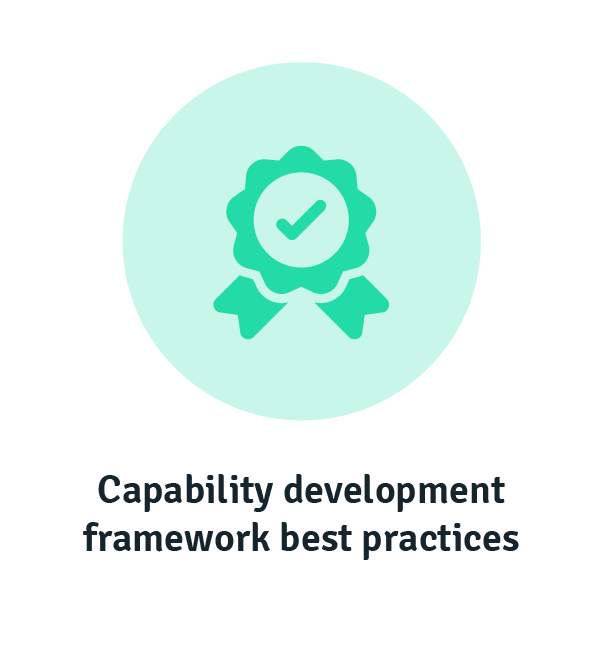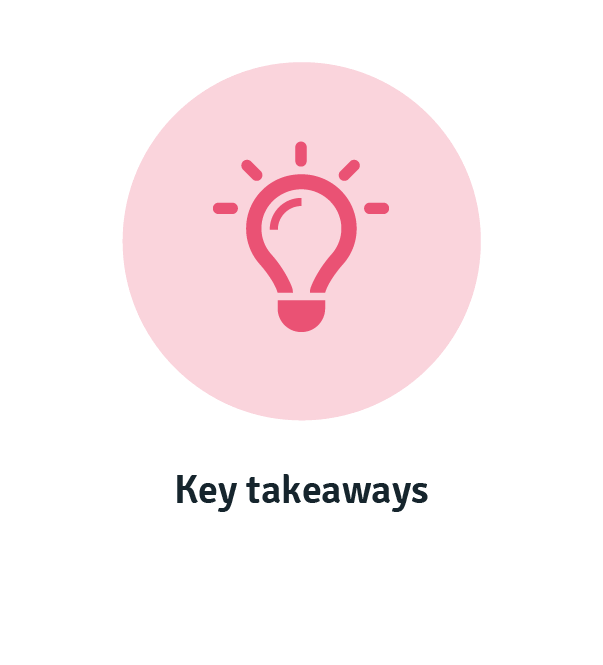If you’re looking to upskill and reskill your workforce to meet your organisational goals, you’ll want the help of a capability development framework.
It’s the key driver behind linking your business priorities to professional development and performance, allowing you to streamline your business success.
So, what exactly is a capability framework, and why does it matter?
What is a capability development framework?
A capability development framework (CDF) is a tool that organisations use to outline what skills, knowledge and behaviours are expected of their employees to fulfil their roles in order to meet business priorities. A successful CDF drives recruitment, development opportunities and performance in your workforce.
Why you need a capability development framework
It’s not enough to simply hire talent with the necessary skills to carry out their roles in the present. Over time there will be changes in technology, industry direction and business needs, and you’ll need a capable workforce in order to keep up.
An organisational capability framework is an essential factor in ensuring the improvement and growth of your staff, allowing them to improve on their existing capabilities or acquire new ones. Without one, you’ll have a workforce that is under-skilled and lacking mission-critical knowledge, which, in turn, will reduce your competitive advantage.
The CDF can extend many lifelines throughout your organisation, including to:
- Recruitment
- Job design and role descriptions
- Career planning
- Succession planning
- Performance development practices
- Learning and development
- Workforce planning.
Linking capability development to performance is why we created the first performance learning management system (PLMS) here at Acorn. A PLMS is designed to codify and operationalise capabilities to improve organisational efficiency, by guiding learners step-by-step to master the specific capabilities of their roles.
Recruitment
With a CDF, you’ll know exactly what capabilities are required to carry out a role, and the level of expertise necessary. This makes it easier when it comes to recruiting new talent to fill vacancies, as you can measure the skills and expertise of potential candidates to narrow down the selection process.
Job design and role descriptions
A capability framework is particularly helpful when it comes to job design and role descriptions. You can use a CDF to determine what capabilities are necessary for specific job roles and establish which systems and processes an employee should know in that position. This will ensure that your workers have a clear idea of their responsibilities, which will boost productivity.
Career planning
Career planning is about what type of career and professional goals the individual employee wants to pursue, allowing them to experience career satisfaction. People don’t want to work in jobs that have little variety in the role, they want to grow, adapt and reach personal career goals in a job that teaches them new things. Studies have found that continued learning throughout your life increases your happiness.
Succession planning
Every now and then roles will become vacant within your organisation, and you’ll need to find a way to fill them. Perhaps you’ll recruit from an external talent pool, or maybe you’ll hire internally. If your plan is to promote an employee you already have, a capability framework will help you find the best candidate.
Not only will it allow you to determine the capabilities of each candidate, but if you know certain roles will become vacant soon, you can plan for certain individuals to learn the capabilities needed to take up the role in the future.
Performance development practices
These days, performance management is about continuous feedback in order to align the individual goals of the employee with the overall organisational goals. Let’s go back to career planning and your workers’ aims for their career development. Imagine if you outlined a way to align your goals for career development programs with your strategic priorities, using a CDF to measure your progress. It’s not far-fetched; a CDF can really do that for you.
Learning and development
A CDF is what will allow learning and development (L&D) to proceed efficiently. We all know the purpose of L&D is to boost the skills, knowledge and behaviours of the workforce in order to increase performance and meet business goals. You can use a capability framework in L&D to make the process more efficient, arming your employees with the skills, knowledge and behaviour that form the capabilities they need to fulfil their roles in the company.
Workforce planning
Workforce planning is all about getting the right people with the right skills in the right jobs at the right time to deliver on your organisation’s strategic objectives. While every new recruit starts out with the necessary capabilities to carry out their role, as time goes on, you’ll be faced with your workforce’s greatest enemy: Attrition.
An under-skilled workforce, or a workforce with outdated skills won’t be able to meet your desired organisational outcomes. But if you implement a CDF in your business, you can prevent and remedy attrition before it even begins, building a workforce of the future.
Who is responsible for creating a CDF?
Like all things relating to the improvement of your organisation and workforce, it’s important that you gain input and buy-in from interested parties when you create your CDF. You need to ensure that your capability framework is on the right path to:
- Define capabilities relevant to specific roles, teams, and projects.
- Align with overall business strategy and objectives.
The best way to do this is by opening a dialogue between managers (i.e. the people who can outline what capabilities employees need) and HR leaders (i.e. the people who understand the business’s strategic direction).
How advanced is your ability to develop organisational capability?
There are four stages of maturity in developing organisational capability. Managers and HR leaders advance up the scale as they improve their expertise. The four levels of expertise are:
- Foundational: You achieve the task with guidance
- Proficient: You achieve the task by yourself
- Advanced: You’re an expert and can support and teach others
- Strategic: You decide on strategy and practice.

Capability development framework best practices
Unfortunately, a lot of organisations leave their CDFs to gather dust rather than implement them. Worse still, there’s always the chance your CDF could be poorly developed to begin with. As with all business planning, there are some things you should consider if you want to build and implement an effective capability development framework.
Make it unique
The first thing you need to know about creating a capability framework for your business is that your CDF has to be completely unique to it. You can’t just slap a pre-made CDF on your company and expect it to have any measure of effectiveness on your workforce. You need to determine what capabilities are necessary for your organisation specifically (hint: think about your business objectives). Without a tailored CDF, your workforce won’t have the necessary skills or knowledge to complete their projects and achieve your desired business objectives.
Balance technical and people skills
Don’t just focus on one type of skills. Whatever your business priorities may be, if you want your organisation to stay on top, you’ll need a healthy balance between technical and people skills. Technical skills include things like expertise and proficiency in systems, processes and job-related activities, while your people skills are things like communication, adaptability and leadership.
Your technical skills are obviously needed to get the job done and deliver on targets. But people tend to forget that soft skills (your people skills) are just as essential for leaders to have so they can influence and communicate effectively with their team. Regardless of what your company’s goals are, you’ll need to develop a workforce with both types of capabilities to deliver on them, lest you skew too far in one direction.
Use the CDF to assess employees and show progression over multiple levels
Make sure you regularly assess your talent against your CDF to measure their improvement in their set capabilities. It’s important that their progress is known not only to you but to the workers themselves, so that they understand how they’ve been developing. A good way to show improvement in organisational capabilities is by defining clear levels of progress over the course of your workforce’s individual capability development.
Using a learning platform to upskill employees and measure improvement
Implementing and carrying out a capability framework takes a lot of time and effort, but you can cut some of that out with a performance learning management system. You’ll be able to choose which organisational capabilities from your CDF you need certain teams and workers to develop, allowing them to learn in their own time without requiring your company to organise dedicated internal training.
Key takeaways
If you’re looking to build a sustainable organisation, you’ll need the support of a tailored organisational capability framework. A CDF crafted specifically to serve your organisation’s development needs will improve professional growth and performance management activities from recruitment and job design to workforce planning and L&D.
Just remember to create your CDF using a well-rounded variety of skills and expertise, and clearly show the progress of your workforce from where they are now to where you need them to be.
Related Reads on This Topic

Why Competency Management is Important for Strategic Performance Management
Competency management is the key to strategic performance management and uncovering capability gaps in your workforce…

How to Use a Business Capability Heat Map to Support Organisational Strategy
A business capability heat map helps in realising and delivering effective business strategy. Take a look at how you can do it…

4 Capability Framework Examples and How They Are Used in Organisational Strategy
Learn how to develop your own capability framework from these organisational and public sector capability framework examples…




